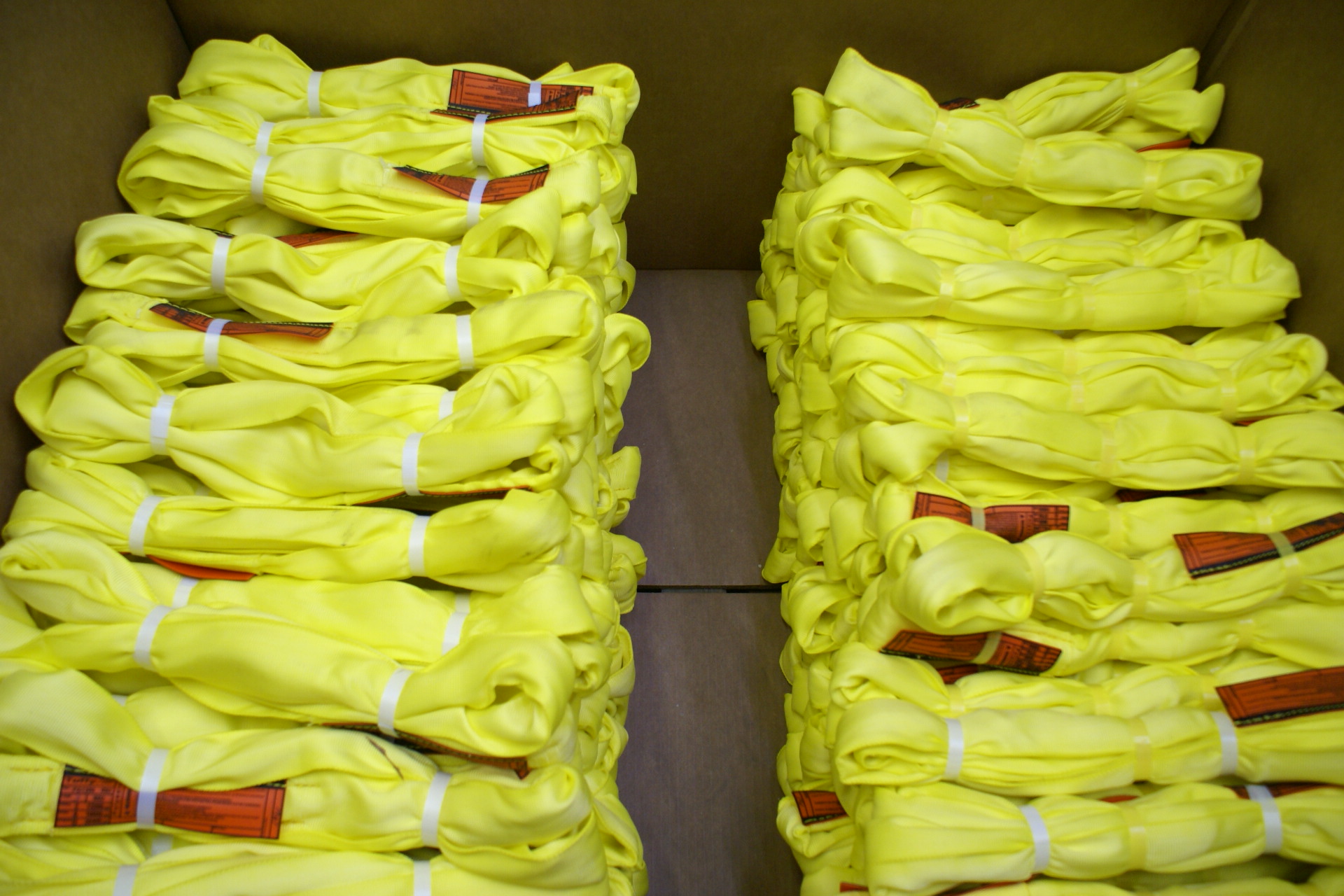SYNTHETIC WEB SLINGS
Synthetic web slings are made using polyester or nylon flat webbing and are the preferred sling when lifting highly-polished, fragile or delicate loads that have to be protected from damage. Nylon webbing is available upon request, but not the standard material used in fabrication at Tuffy Products. The soft texture of the webbing will not mar, deface or scratch the loads while the wide surface area ensures a firm secure grip around the load. It's recommended to use sling protection between the sling and load edges when using web slings.
Please use the sidebar on the left for the different types of synthetic web slings offered by Tuffy Products. Need something custom? Let us know!

NYLON vs. POLYESTER
Both materials are heavy webbing loomed specifically to deliver dependable service in tough industrial conditions. Each is offered in two grades or strength ratings, identified in the numbering code of every stock number. Choose the strength that fits your application. Nylon and polyester perform equally well in many applications, but each is designed for use in specific conditions. Here’s a summary of their differences and similarities.
Differences
Elastic Stretch: Nylon will stretch about 6% when loaded — about twice that of polyester — at sling’s rated capacity and still return to original length. Overloading beyond rated capacity will permanently stretch and weaken both types.
Stability to Acids vs. Alkalis: In general, nylon is more stable when exposed to alkalis, while polyester performs better when exposed to acids. But there are exceptions to each. For more details, please check with us.
Similarities
Handling Characteristics: Each type handles the same way. Water absorption is also low for both, which means the sling’s rated capacity isn’t seriously affected.
Identical Temperature Constraints: Neither nylon nor polyester should be exposed to heat exceeding 194° F (90° C) or below -40° F (-40° C).
Susceptibility to Prolonged Sunlight: Although we’ve added special treatments to provide some protection against long-term exposure to direct sunlight, both nylon and polyester are vulnerable. In direct exposure to sunlight, properly stabilized nylon outperforms polyester, but when exposed under glass, it’s polyester that outperforms nylon. We recommend you store both types inside or under cover.
Stability Under Exposure to Many Common Chemicals: As shown in the chart, neither is affected by common chemicals, normal dry-cleaning solutions, or soap and water. Both also retain their strength in oil and grease.
| Chemical | Nylon | Polyester |
| Acid | X | * |
| Alcohol | OK | OK |
| Aldehydes | OK | X |
| Strong Alkalis | OK | ** |
| Bleaching Agents | X | OK |
| Dry Cleaning Solvents | OK | OK |
| Ethers | OK | X |
| Halogenated Hydrocarbons | OK | OK |
| Hydrocarbons | OK | OK |
| Ketones | OK | OK |
| Oil, Crude | OK | OK |
| Oil, Lubricating | OK | OK |
| Soaps, Detergents | OK | OK |
| Water, Seawater | OK | OK |
| Weak Alkalis | OK | OK |
*Disintegrated by concentrated sulfuric acid.
**Degraded by strong alkali at elevated temperatures.
Both Materials Work Best Clean: Neither material supports the growth of mildew or bacteria, although dirt may accumulate on slings to support such growth. That’s why we recommend cleaning with water and then hanging to allow the sling to completely dry before use.
